A year of coronavirus: How the pandemic unfolded in the UK
The Government’s measure of the Covid-19 death toll has passed 100,000, around a year on from the first reported coronavirus cases in the UK.
The last 12 months have seen thousands of lives lost and everyday life has completely changed.
Here is a reminder of some of the key events:
– January 23: Health Secretary Matt Hancock tells the House of Commons that the UK is “ready to respond appropriately” to any cases of coronavirus that emerge.
– January 30: Peter Attwood, 84, from Chatham in Kent, dies in hospital – though his death was not formally confirmed as having involved Covid-19 until the end of August.
– January 31: The first coronavirus cases are reported in the UK when two members of the same family – a University of York student and a relative – test positive for the virus.
– March 5: A patient with underlying health conditions becomes what is believed at the time to be the first person in the UK to die after testing positive for Covid-19.
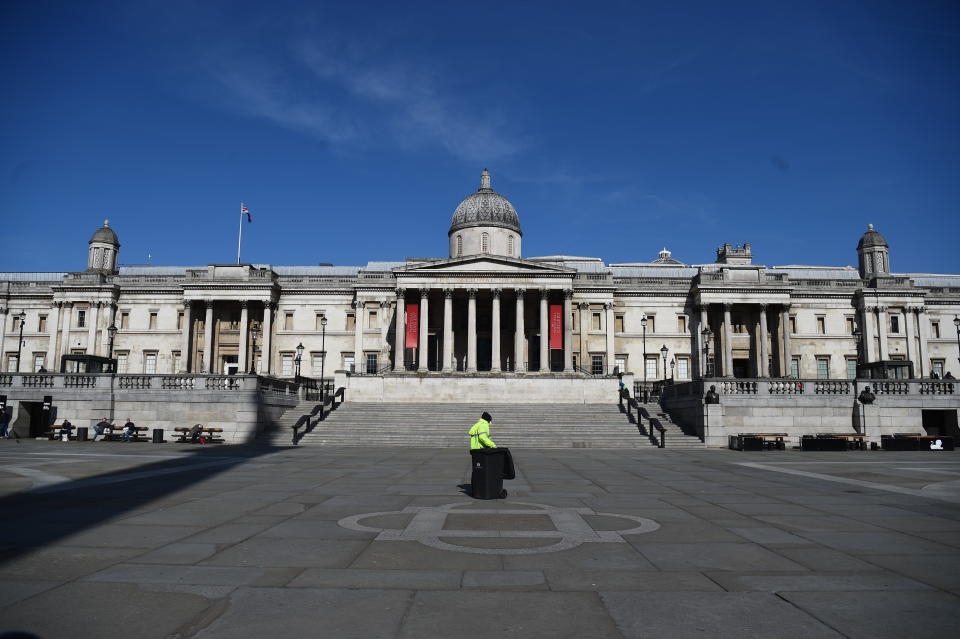
– March 14: Ten more patients die with coronavirus in England, taking the UK death toll to 21, while the US government imposes a ban on travel from the UK and Ireland.
British food retailers urge customers to shop responsibly following widespread panic-buying of essentials, including toilet paper, hand sanitiser and pasta.
– March 16: The Imperial College Covid-19 response team warns around 250,000 people will die in Britain unless more draconian measures are adopted.
In the first daily press conference, Prime Minister Boris Johnson calls on people to stay away from pubs, clubs and theatres and to avoid all non-essential contacts and travel.
– March 17: The NHS moves to cancel all non-emergency surgery while Chancellor Rishi Sunak unveils a package of financial measures, including loans worth £330 billion, to help businesses through the coronavirus crisis.
– March 18: It is announced that schools across the UK will close to all pupils except those of key workers, as the coronavirus death toll climbs to 104.
– March 20: Mr Johnson orders pubs and restaurants across the country to close, with cinemas, nightclubs, theatres, gyms and leisure centres also told to shut their doors.
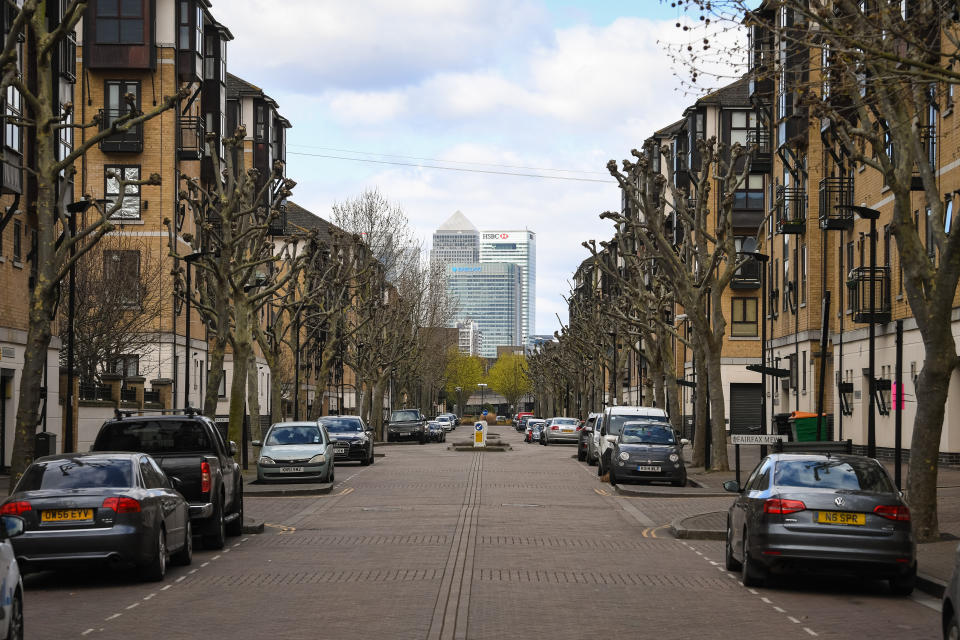
– March 23: Mr Johnson tells the UK public they will only be allowed to leave their homes for limited reasons, including food shopping, exercise once per day, medical need and travelling for work when absolutely necessary.
All shops selling non-essential goods are told to close, gatherings of more than two people in public are banned, events including weddings – but excluding funerals – are cancelled.
– March 24: Mr Hancock reveals that a new Nightingale hospital – with a capacity of 4,000 – is being prepared at the ExCeL Centre in London.
– March 25: The Prince of Wales tests positive for coronavirus but is displaying only “mild symptoms”, Clarence House says.
– March 27: Mr Johnson and Mr Hancock test positive for Covid-19, while chief medical officer Professor Chris Whitty says he has symptoms and is self-isolating.
Over the last 24 hours I have developed mild symptoms and tested positive for coronavirus.
I am now self-isolating, but I will continue to lead the government’s response via video-conference as we fight this virus.
Together we will beat this. #StayHomeSaveLives pic.twitter.com/9Te6aFP0Ri
— Boris Johnson (@BorisJohnson) March 27, 2020
– April 5: The Queen tells the nation if we “remain united and resolute” in the face of the coronavirus outbreak, “we will overcome it”.
Downing Street says the Prime Minister has been admitted to hospital for tests as a “precautionary step” as his symptoms persist.
– April 6: Downing Street says Mr Johnson’s condition has worsened and he is moved to St Thomas’ Hospital’s intensive care unit.
– April 7: Downing Street says the PM’s condition remains “stable” and he is in “good spirits”. He is later moved from intensive care back to the ward.
Last night, on the advice of my doctor, I went into hospital for some routine tests as I’m still experiencing coronavirus symptoms. I’m in good spirits and keeping in touch with my team, as we work together to fight this virus and keep everyone safe.
— Boris Johnson (@BorisJohnson) April 6, 2020
– April 12: Mr Johnson is discharged from hospital and will continue his recovery at Chequers, Downing Street says.
The hospital death toll of people who have tested positive in the UK passes the 10,000 mark.
– April 30: In his first Downing Street press conference since being admitted to hospital, Mr Johnson says the country is now “past the peak of this disease”.
– May 4: It is announced the first NHS Nightingale field hospital – at London’s ExCeL centre – will be placed on standby.
– May 5: The UK’s declared death toll from coronavirus rises to more than 32,000, passing Italy’s total and becoming the highest in Europe.

– May 10: Mr Johnson announces the first easing of England’s lockdown, telling people they are allowed to sunbathe in parks and leave the house to exercise more than once a day.
– May 18: Everyone aged five and over is made eligible to be tested for coronavirus if they are showing symptoms, which are expanded to included a loss of taste or smell.
– May 22: Reports suggest Mr Johnson’s senior aide Dominic Cummings allegedly broke the Government’s lockdown rules when he was spotted at his parents’ property in Durham, where he was recovering from coronavirus symptoms after travelling from his London home with his wife, who also fell ill, and son.
– May 23: A second eyewitness tells newspapers they saw Mr Cummings a week earlier in Barnard Castle, a popular tourist location 30 miles away from Durham, during the period he was believed to be self-isolating.
– May 25: Mr Cummings defends his actions at a press conference in the Downing Street rose garden, saying he believes he behaved “reasonably” and does not regret his actions.
– May 28: NHS Test and Trace officially launches across England with the help of 25,000 contact tracers, while an accompanying app is still delayed by several weeks.
Mr Johnson announces groups of up to six are allowed to meet outside.
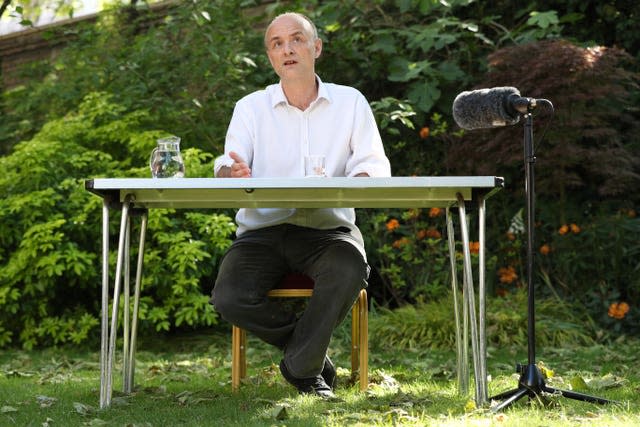
– May 30: Professor Jonathan Van-Tam says Britain is facing a “very dangerous moment” with the easing of lockdown restrictions.
– June 1: Lockdown measures are eased, with schoolchildren in England in Reception, Year 1 and Year 6 returning to the classroom.
– June 16: The cheap steroid dexamethasone is hailed as a major breakthrough as a study suggests it is the first drug to reduce deaths from coronavirus.
– June 19: The UK’s chief medical officers agree to downgrade the coronavirus alert level from four to three after a “steady” and continuing decrease in cases in all four nations.
– July 3: A list of 73 countries and territories where English tourists can visit without self-isolating on their return is published, including popular short-haul destinations such as Spain, France and Italy.
– July 4: Pints are poured in pubs and couples finally say “I do” as lockdown restrictions are eased across England.
– July 17: Mr Johnson eases the work-from-home guidance as he sets out plans for a “significant return to normality” in England from as early as November.
– July 24: Face coverings become mandatory in shops across England, with £100 fines for people who flout the rules.

– July 30: People who test positive for coronavirus or display symptoms must now self-isolate for 10 days as Mr Hancock warns of a “second wave starting to roll across Europe”.
– August 3: The Government’s Eat Out To Help Out scheme launches, with restaurants, pubs and cafes offering half-price meals to diners during August.
– August 24: The Prime Minister issues a plea to parents to send their children back to the classroom when schools reopen.
– September 8: Mr Hancock warns of a possible second peak following a “concerning” rise in the number of cases.
Social gatherings of more than six people will be illegal in England from September 14, ministers announce, as the Government seeks to curb the rise in coronavirus cases.
– September 17: Baroness Dido Harding denies that the Test and Trace system is failing but acknowledges that a surge in demand is significantly outstripping capacity.
– September 18: Mr Johnson warns that a second wave of coronavirus has arrived in the UK.
The R number – representing the number of people an infected person will pass the virus to – is estimated to be between 1.1 and 1.4, meaning cases could rise very quickly.
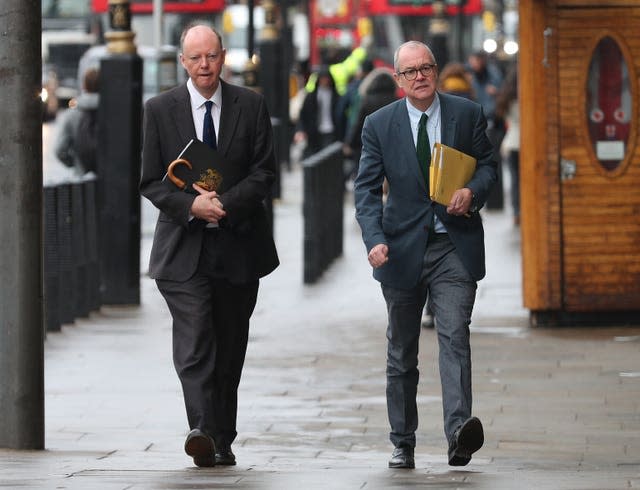
– September 21: Chief scientific adviser Sir Patrick Vallance tells a televised briefing the UK could see 50,000 cases a day by mid-October and a daily death toll of 200 or more a month later unless urgent action is taken.
– September 22: The Prime Minister prepares to announce new restrictions including a 10pm curfew on pubs, bars and restaurants in England from September 24.
Cabinet Office Minister Michael Gove recommends that people now work from home if able to do so.
– September 24: A total of 6,634 new coronavirus cases are recorded, the highest single-day figure so far since the outbreak began.
– October 12: The Prime Minister launches a three-tier system of local alert levels for England, with the Liverpool City Region the only area to be placed in the Tier 3 – very high – category.
– October 31: Mr Johnson announces that people in England will be told to stay at home for four weeks as the country is placed under another national lockdown, with the closure of hospitality and non-essential shops.
– November 24: The UK Government and devolved administrations agree on plans allowing families to reunite over the festive period by forming “Christmas bubbles”.
– December 2: England’s national lockdown comes to an end and is replaced by a strengthened three-tier system.
Meanwhile, the UK becomes the first country in the world to approve the coronavirus vaccine from Pfizer and BioNTech.

– December 8: Grandmother Margaret Keenan, 90, becomes the first patient in the world to receive the Pfizer/BioNTech jab as the NHS launches its biggest ever vaccine campaign.
– December 14: Mr Hancock tells MPs a new strain of coronavirus has been identified in southern England, with the number of cases involving the new variant “increasing rapidly”.
Tougher restrictions are imposed on London and parts of Essex and Hertfordshire following “very sharp, exponential rises” in cases.
– December 19: The Prime Minister cancels Christmas for almost 18 million people across London and eastern and south-east England by moving them into a newly created Tier 4 for two weeks – effectively returning to the lockdown rules of November – after scientists warn of the rapid spread of the new variant VUI 202012/01.
– December 30: It is announced that an additional 20 million people in England will move to the tightest restrictions, making a total of 44 million in Tier 4, or 78% of the population.
Meanwhile, a Covid-19 vaccine from Oxford University and AstraZeneca has been approved for use in the UK.
– January 4 2021: The Covid-19 alert level should be raised to five – the highest setting – a joint recommendation from the UK’s chief medical officers says.
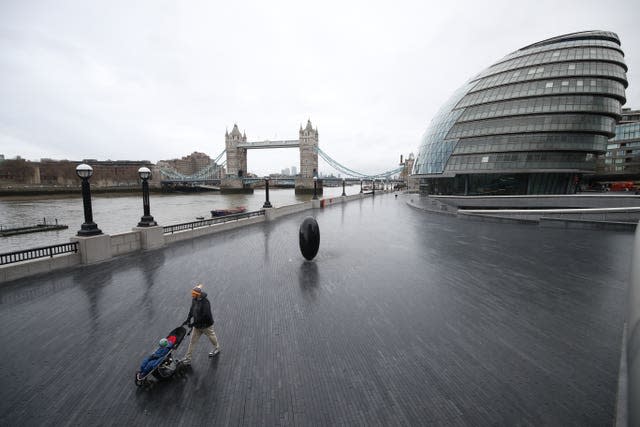
Later that evening, in a televised address, Mr Johnson announces a third national lockdown for England which will see schools shut to most students and people urged to stay at home to prevent the NHS being overwhelmed by surging coronavirus infections.
– January 9 2021: The Queen and Duke of Edinburgh receive their Covid-19 vaccinations and take the unusual step of making a health matter public.
– January 19 2021: An estimated one in eight people in England had Covid-19 by December last year, according to antibody data from the Office for National Statistics’ Covid-19 Infection Survey.
– January 26 2021: According to the Government’s measure of the death toll, more than 100,000 people in the UK have now died within 28 days of testing positive for coronavirus since the pandemic began.

 Yahoo Finance
Yahoo Finance 